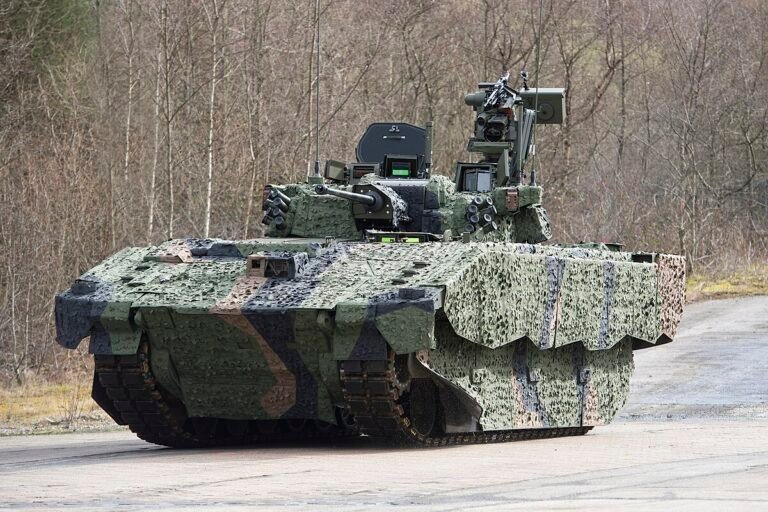The UK military has announced the first delivery of Ajax armoured vehicles, eight years behind schedule, raising questions about their relevance as drones dominate modern battlefields.
Junior Defence Minister Luke Pollard confirmed that the first 50 vehicles, each costing nearly £10 million, are ready for deployment on Nato’s eastern flank. He acknowledged past delays, with missed delivery deadlines in 2017, 2020, and 2021, calling the programme a learning experience.
“The Ajax took many, many years to contract, and we need to cut that time drastically,” Pollard said at a manufacturing site in Merthyr Tydfil, south Wales. “Our mission is to support our Nato allies and secure the eastern flank,” he added, though he did not announce specific operational plans.
The Ajax, an armed reconnaissance vehicle, was first commissioned in 2010. Initial deliveries were expected in early 2017, but a fixed-price £5.5 billion contract with US firm General Dynamics was not awarded until July 2020. Early demonstrations revealed excessive vibration and noise, halting tests after 11 soldiers reported tinnitus and hearing loss. Pollard said safety concerns have been resolved, with protective measures now in place.
The vehicle’s core design allows a three-person crew to conduct forward reconnaissance in high-risk areas without leaving the vehicle. It features advanced cameras and sensors and can operate continuously for up to a week. Variants of the Ajax exist, but all are built for scouting and intelligence gathering in contested zones.
The long delays have meant the Ajax arrives during the fourth year of the Ukraine war, where armoured vehicles have struggled to achieve significant breakthroughs. Cheap, one-way drones have proven highly effective against tanks and traditional armour, raising questions about the relevance of large reconnaissance vehicles on modern battlefields.
Soldiers involved in the Ajax programme argue that it is not obsolete. Lieutenant Colonel Andrew Rawlinson, an Ajax vehicle commander, said the UK would not adopt Ukraine-style trench warfare, and that the Ajax has capabilities drones cannot match. “Many drones have a battery life of only 30 minutes to an hour,” he said, emphasizing the vehicle’s extended operational capacity.
The UK Army plans to use Ajax in combination with allied forces, fighter jets, and infantry for both combat and peacekeeping missions. The vehicles also support domestic employment, with 4,100 jobs tied to the programme.
The Ministry of Defence has ordered a total of 589 Ajax vehicles and their variants, with full delivery now scheduled for completion by the end of the decade. The first batch marks a significant, if delayed, step in the UK’s long-term armoured reconnaissance capability.







